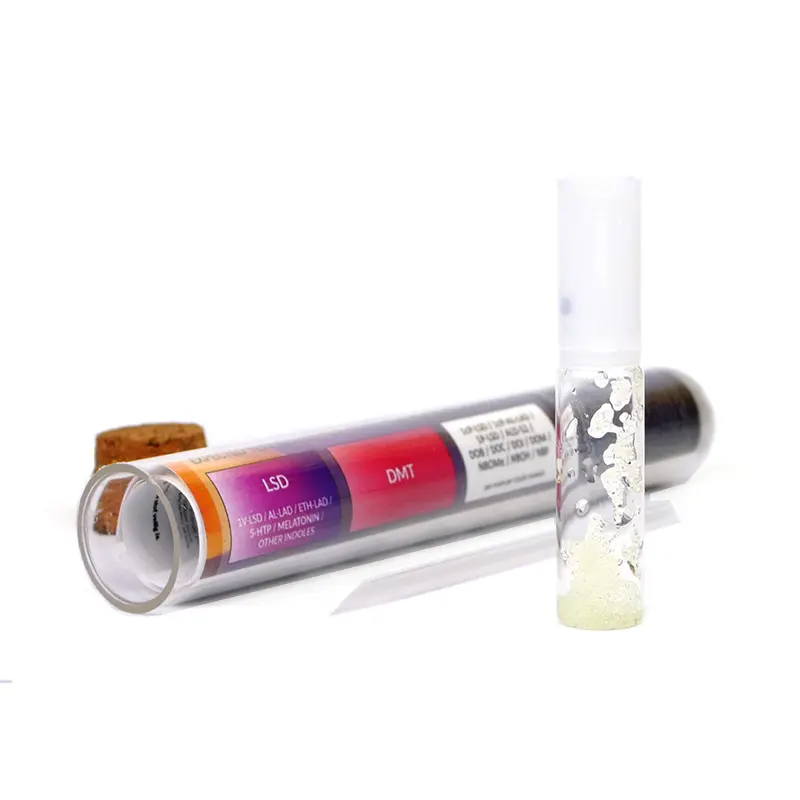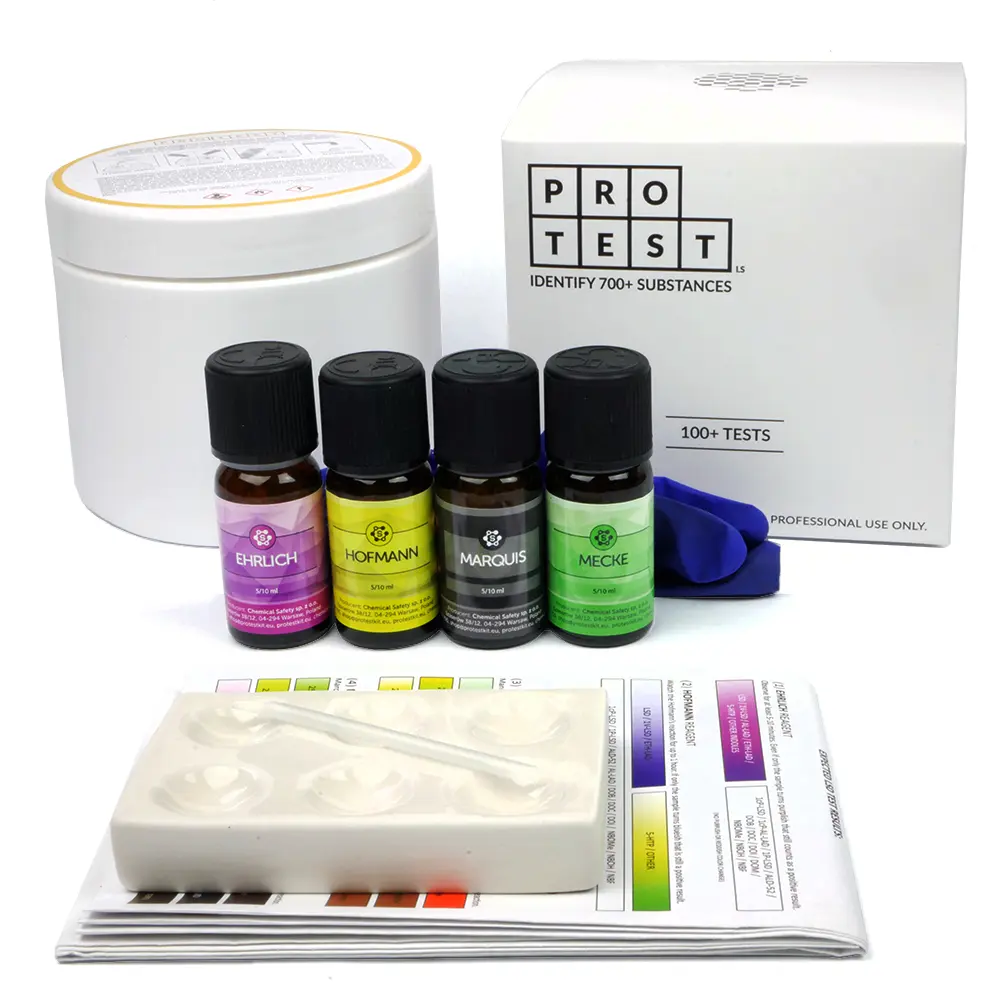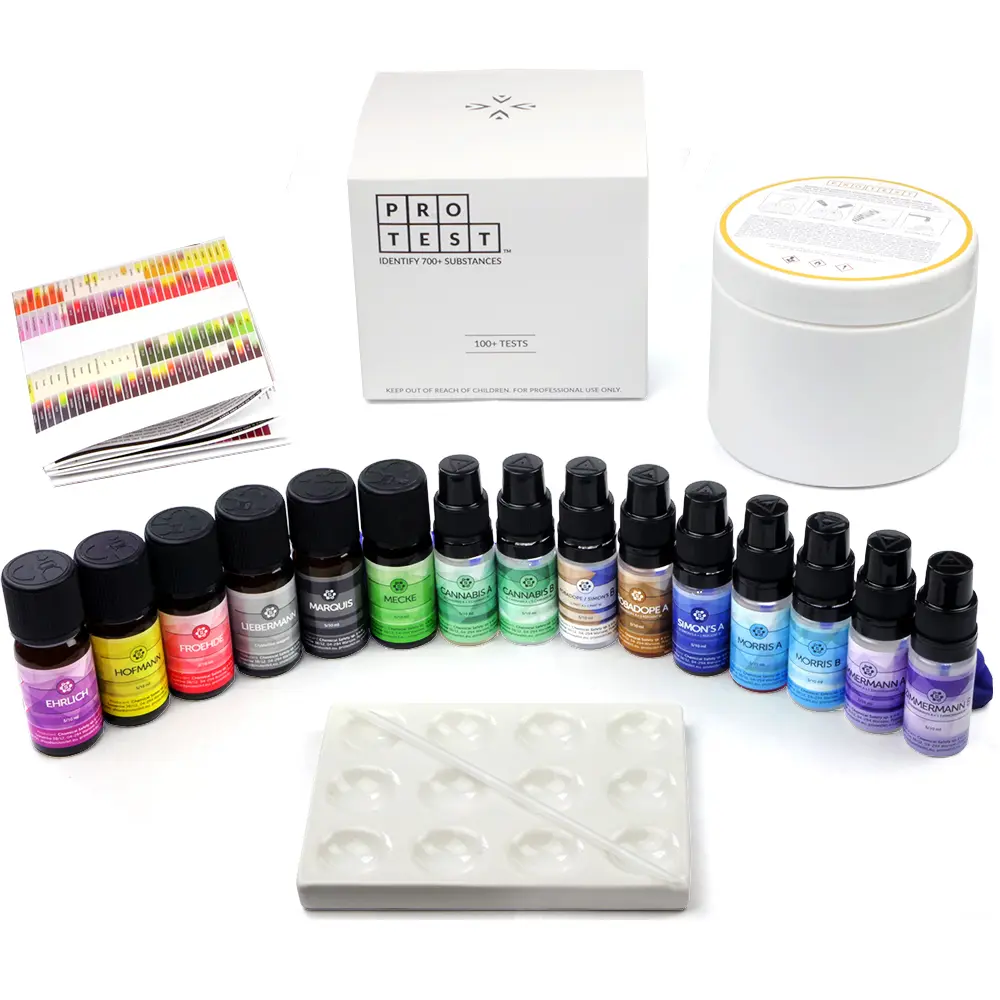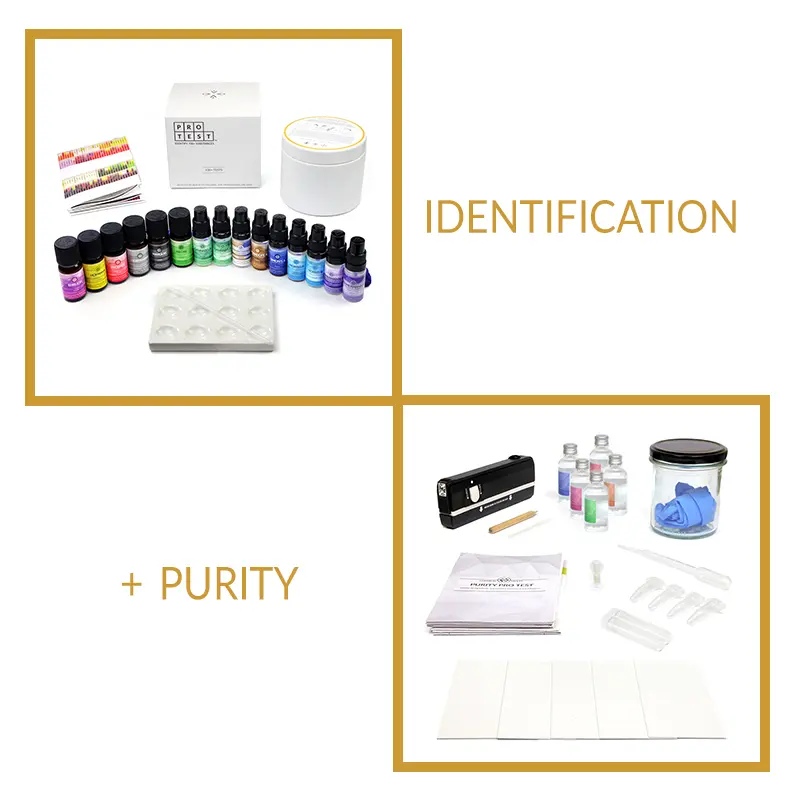How to test LSD gel tabs?
LSD gel tabs (also known as windowpane) are more tricky to test than other forms of LSD such as blotters, pills or crystals, because they contain more filler (carrier) substance, and because that substance itself can cause inclonclusive results. With gel tabs the typical LSD tests (Ehrlich reagent and Hofmann) are known to cause false negatives or false positives if tests are used without following specific instructions.
The recommended methods to test gel tabs are:
- Testing middle of a gel tab
- Relying on Hofmann reagent
- Extracting LSD before reagent testing
Testing middle of a gel tab
- Degree of degradation in storage
- Quality of batch preparation method
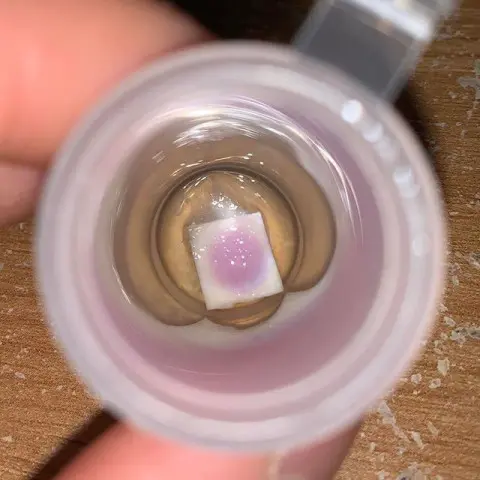
Ehrlich test result of handmade LSD
Relying on Hofmann reagent for LSD
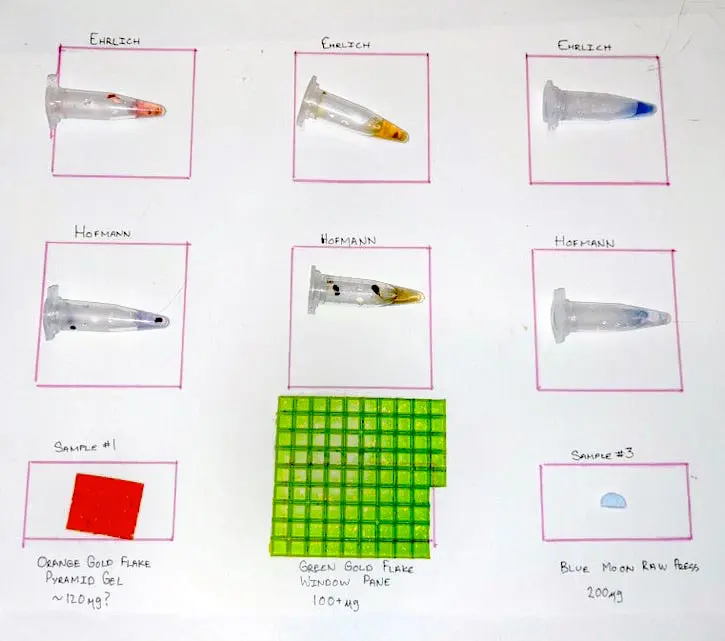
Testing LSD gel tabs and pill with Ehrlich reagent and Hofmann
Extracting LSD before testing
“Acid” gel tabs are usually made with gelatin, which can severely interfere with reagents due to the presence of various amino acids. To avoid an inconclusive Ehrlich result caused by gelatine it is recommended to extract the LSD into a different solution and test it separately.
HOW TO EXTRACT LSD FROM GEL TABS:
-
Place gel medium in small amount of water.
-
Basify gel-water mixture with NaOH.
-
Gel medium fully dissolves.
-
Add solvent (ethyl acetate) to gel-water mixture.
-
Separate off the solvent and drop onto ceramic well plate.
-
Without heat evaporate the solvent until dry.
-
Drop field reagents into wells, photograph.
Source: https://www.erowid.org/columns/crew/2019/01/reagents-and-lsd-gel-tabs/
Proceed with testing with Ehrlich and Hofmann reagents as explained earlier in this article.
LSD gel tabs test kit
LSD reagent tests:
A positive or negative test result does not indicate if the substance is safe. No substance is 100% safe.
